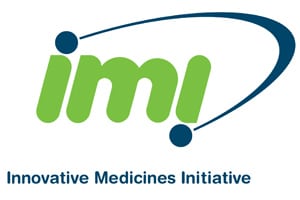
The EU’s Innovative Medicines Initiative (IMI) has launched a new project that will bring together small and large pharma companies, academia and patient groups to try to find new ways to treat acute and chronic pain.
A key aim of the €23m scheme is to try to find alternatives to opioid analgesics for chronic pain – which have significant problems including side effects and the risk of addiction – and to identify ways to improve the care of people suffering from both acute and chronic pain. The EU is funding the four-year project with just over €11m with industry stumping up the remainder.
The IMI-PainCare project gets underway as a report for the Biotechnology Innovation Organization (BIO) in the US has suggested that pain drug development has been a lean area for new drug development in recent years, with just two new chemical entities approved by the FDA over the last decade.
BIO says there are just 220 clinical-stage programmes involving 125 NCEs in the pharma industry’s pain pipeline – which compares to more than 2,600 cancer candidates, for example – and the historical clinical success rate is at a lowly 2%. Funding for projects is also scant, accounting for 3.6% of total venture funding for new drugs.
As it stands, the treatment of both acute and chronic pain is often “inadequate”, according to the IMI, something it attributes to poor translation of preclinical model results into clinical trials and a “lack of sophistication in outcome reporting and accurate division of patients into subgroups in clinical trials.”
A total of 40 groups will take part in the project, with one of the sub projects – dubbed PROMPT – trying to develop a standardised system for patent reported outcomes measures in an effort led by Winfried Meissner of the University of Jena and Hiltrud Liedgens of drugmaker Grünenthal.
The standardised reporting system should be applicable to both acute and chronic pain settings as well as real-world evidence (RWE) reporting, and create a common set of evidence for pain relief claims when in discussion with regulators, say the project leaders.
A second sub-project – BioPain – will try to identify functional pain biomarkers that can be used in early-stage research to predict responses in clinical trials, and serve as surrogate endpoints in patient studies. It will be led by Rolf-Detlef Treede of the University of Heidelberg and Keith Phillips from Eli Lilly.
Finally, a third sub-project will tackle the specific problem of pelvic pain associated with disorders such as endometriosis and interstitial cystitis. Called TRiPP and run by Katy Vincent of the University of Oxford and Jens Nagel of Bayer, it will focus on finding subgroups within these diseases and identifying biomarkers that can be used to develop more personalised treatments.
“Acute and persistent pain of different origins represent a common medical, social, and economic burden, and improvement of its management is still a major challenge for all health care systems,” commented Treede.
“The consortium “represents an unprecedented close cooperation between academia, SMEs, patient organisations, pain societies and pharmaceutical companies,” he added.




